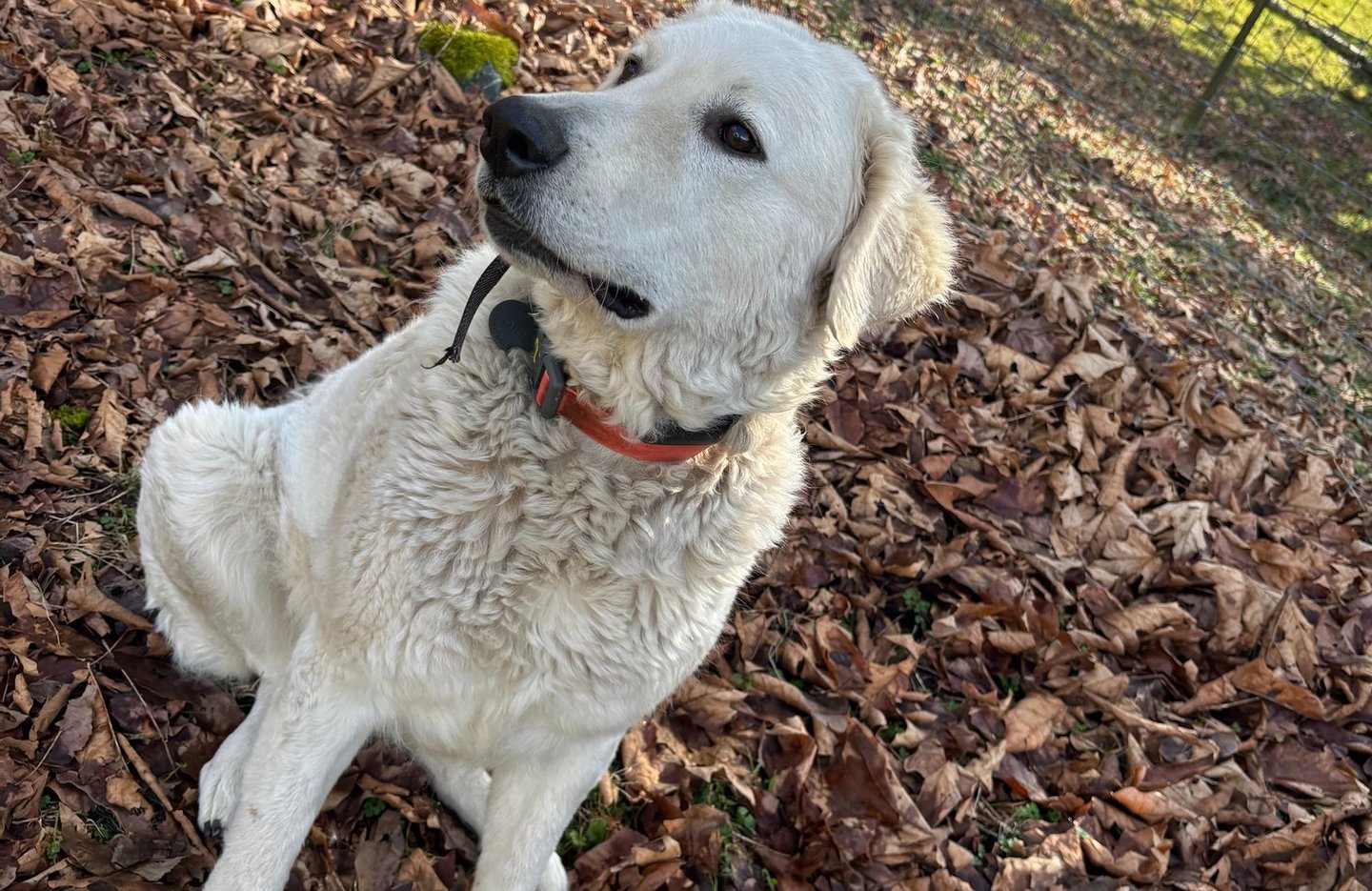Comitted to excellence in breeding hungarian Pumi and HUngarian kuvasz
Utilizing Kuvasz Dogs in the Forestry Sector to Safeguard Tree Planters and Workers from Predators
Summary
The Kuvasz (plural: Kuvaszok), a large, highly intelligent livestock guardian dog (LGD) originating from Hungary, presents a powerful and underutilized tool in enhancing safety in remote forestry operations. These dogs possess the physical power, agility, independence, and instinctual awareness necessary to protect forestry workers—such as tree planters, surveyors, and field technicians—from potential encounters with apex predators like bears, cougars, and wolves.
Given the increasing encroachment into predator habitats due to expanding forestry operations, the Kuvasz stands out as a working companion capable of providing non-lethal deterrence, early warning, and physical intervention if needed. This report details the breed's capabilities, the unique advantages it offers, and how similar livestock guardian breeds have been successfully integrated into industrial and conservation contexts.
1. The Kuvasz: A Breed Profile for Forestry Safety
1.1 Origins and Genetics
The Kuvasz is an ancient breed, developed over thousands of years in the Carpathian Basin. Its primary function was to independently guard livestock against large carnivores—often working miles away from human supervision. Kuvasz were also used in cattle drives to prevent cattle theft and could even pull a cattle thief right off their horse! Kuvasz were also used to find and arrest spies in the Carpathian Mountains. This evolutionary selection for intelligence, courage, situational awareness, and decision-making autonomy makes the Kuvasz uniquely qualified for protecting dispersed human workers in predator-rich zones.
Unlike many modern breeds selected for appearance or tractability, Kuvaszok have retained strong cognitive traits which could justify consideration as a functional subspecies or ecotype within Canis lupus familiaris. Their complex behavioral patterns and problem-solving skills resemble working line wolves more than traditional domestic pets.
2. Physical and Mental Capabilities Relevant to Forestry
2.1 Strength and Agility
Muscle mass and power: Adult Kuvasz typically weigh between 90–115 lbs (males), with dense bone and powerful musculature capable of tackling large predators.
Agility: They can leap vertically up to five feet—a testament to their athleticism and ability to clear logs, rock formations, and brush barriers in rugged terrain.
Endurance: Bred for long patrols, Kuvaszok can operate continuously in vast forestry blocks, matching the pace of planters and navigating irregular terrain.
2.2 Intelligence and Situational Awareness
Autonomous thinking: Kuvasz dogs are capable of making rapid, independent decisions in high-stakes environments without waiting for human direction.
Environmental scanning: Their innate ability to read scent, body language, and environmental shifts makes them early detectors of hidden threats.
Human-safe coordination: Kuvaszok show an acute sense of spatial awareness, often adjusting their patrol radius to avoid interfering with human equipment or movement—critical in active work sites.
2.3 Fearlessness and Protective Instincts
Unlike conventional breeds, Kuvaszok will confront large predators without hesitation. This fearlessness does not translate to recklessness—they assess threat levels and adapt tactics accordingly.
Their non-aggressive baseline behavior ensures that they do not escalate unless a real threat emerges, which is ideal for multi-person crews.
3. Operational Applications in Forestry
3.1 Tree Planting Crews
Tree planters often work alone or in small groups in remote areas where predator sightings are frequent. A Kuvasz accompanying each crew could:
Provide early detection and alert workers through barking, posture, or body blocking.
Establish a perimeter presence, deterring bears or cougars from approaching.
Engage only if necessary—typically, the Kuvasz’s size and posture are enough to discourage predation.
3.2 Surveying and Remote Field Teams
Ecologists, engineers, and surveyors often work deeper into remote cutblocks or wilderness corridors. Kuvaszok can function as roaming escorts, matching pace and anticipating threats well before they come into view.
3.3 Camp Security
Forestry camps or mobile setups can use Kuvaszok as low-maintenance night guards, patrolling perimeters, detecting scent trails, and offering a living deterrent with far more nuance than alarms or electric fencing.
4. Precedents: Other Livestock Guardian Dogs in Industrial Use
While Kuvaszok are ideal candidates, other LGDs have already seen success in industrial or conservation settings:
Great Pyrenees and Maremma Sheepdogs have been used to guard endangered penguin colonies (Middle Island Project, Australia) and livestock near oilfields in Alberta.
Anatolian Shepherds have been used in African game preserves to reduce human-wildlife conflict, particularly with cheetahs and lions.
LGDs in British Columbia have been tested as part of non-lethal predator management around ranches and logging outposts, showing substantial reduction in predator incidents.
These examples affirm that guardian breeds are versatile enough for adaptation to non-traditional roles beyond livestock protection.
5. Logistical Considerations and Challenges
5.1 Handler Training
Forestry workers would require a briefing or basic training on handling and bonding with their assigned Kuvasz.
Kuvaszok require respect and mutual trust, not authoritarian control.
5.2 Deployment Model
Dogs could either be paired long-term with specific crews or assigned regionally with handlers.
GPS-enabled collars and routine veterinary oversight would ensure tracking and welfare.
5.3 Temperament Matching
Not every Kuvasz is suitable for high-traffic or densely populated areas. Selection for calm, people-social individuals is key.
6. Conclusion: A Logical Expansion of LGD Roles
The Kuvasz is not merely a dog—it is a thinking partner with millennia of evolutionary pressure shaping it to protect, endure, and operate under duress. With increasing human activity in remote and wild environments, the need for intelligent, autonomous safety companions becomes clear.
Integrating Kuvaszok into forestry operations is not only feasible but potentially transformative for non-lethal predator management, human safety, and peace of mind for workers in the field.
7. Recommendations
Pilot program: Initiate a small-scale deployment of trained Kuvaszok in BC or Alberta forestry zones.
Partner with conservationists: Explore grants or partnerships with predator coexistence programs.
Data collection: Track incidents, deterrence success, and worker satisfaction for evidence-based expansion.










Our mission
Our mission is to integrate Kuvasz dogs into British Columbia's forestry sector as natural guardians, enhancing worker safety and promoting sustainable coexistence with wildlife. By leveraging the Kuvasz's ancient instincts and protective behaviors, we aim to reduce human-wildlife conflicts, particularly with predators such as wolves and bears, during forestry operations.
Our vision
We envision a forestry environment where workers operate confidently, knowing that trained Kuvasz dogs are safeguarding their well-being. These dogs will not only deter potential predators but also serve as a bridge between human activity and wildlife conservation, fostering a harmonious balance in forested ecosystems.
Program Objectives
Enhance Worker Safety: Deploy Kuvasz dogs to accompany forestry crews, providing a protective presence against wildlife threats.
Promote Non-Lethal Wildlife Management: Utilize the Kuvasz's natural deterrent abilities to discourage predators from approaching work sites, reducing the need for lethal measures.
Support Conservation Efforts: Align with wildlife conservation goals by integrating traditional practices with modern forestry operations.
Provide Educational Opportunities: Offer training programs for forestry workers on coexisting with wildlife and understanding the role of guardian dogs.
Program Components
Kuvasz Selection and Training: Identify and train Kuvasz dogs with appropriate temperaments and skills for forestry environments.
Deployment Strategy: Integrate dogs into forestry teams, ensuring they are acclimated to the specific challenges of the sector.
Monitoring and Evaluation: Regularly assess the effectiveness of the program through feedback from forestry workers and wildlife experts.
Collaboration with Stakeholders: Work with wildlife conservation groups, forestry associations, and local communities to ensure program success and sustainability.


Committed to Excellence
Dedicated to health and temperament in puppies.
inquiries:
szabokennel@gmail.com
© 2025. All rights reserved.
Charona Shannon
Follow Szabo Kennel on Instagram and Facebook for Updates!




